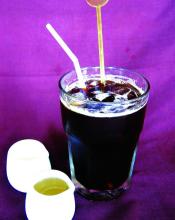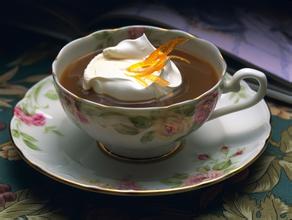Introduction of Panamanian coffee producing areas with medium flavor and uniform texture
The main coffee producing areas of Chiriqui province are Boquete and Volcan-Candela, among which Boquete is famous in the world of fine coffee. Located between Boquete and Volcan-Candela, Baru Volcano is Panama's highest volcano. Fertile soil, regular precipitation and suitable altitude surrounding the volcano create conditions for the production of high-quality coffee.
Panamanian coffee-producing region: Boquete, Chiriqui
Panamanian fine coffee has many varieties, common Geisha, Typica, Bourbon, Caturra, Catuai, San Ramon. The traditional processing method is washing, but with the challenge spirit of the local coffee industry, through unremitting efforts, the high-quality flavor of dry processing and honey processing has begun to refresh the taste buds of coffee customers. In fact, Chiriqui Province is not only bordering Costa Rica, but both share a gift from the Cordillera Centro, a climate suitable for coffee growing. The Central Cordillera Mountains meanders from Costa Rica's western valley region down to Boquete in Chiquiri. For more than a century, local residents have been growing coffee here for generations. Panama is located near 9 degrees north latitude, and the fine coffee production area is concentrated in the western highlands, mainly in the high mountains of Chiriqui Province.
Chiriqui means "Valley of the Moon" in the local language. Chiriqui Province borders Costa Rica, faces the Pacific Ocean, is about 3 hours 'drive from the Caribbean Sea, and is about 7 hours' drive from Panama City. The province is rich in produce and is known as Panama's "bread basket

Important Notice :
前街咖啡 FrontStreet Coffee has moved to new addredd:
FrontStreet Coffee Address: 315,Donghua East Road,GuangZhou
Tel:020 38364473
- Prev

Tanzanian coffee bean Kilimanjaro coffee with stronger coffee concentration, better taste and flavor
Tanzania's main coffee producing area, located at the foot of Mount Kilimanjaro, is rich in volcanic soil. Some coffee trees planted here are more than 100 years old. Coffee was first introduced by Christians from Kenya to grow coffee. Coffee trees must be carefully taken care of, weeded and fertilized. And old branches must be cut off so that new branches can grow to maintain the quality of coffee beans.
- Next

Bitter, fragrant and delicious Guatemalan coffee beans introduce fine coffee
Guatemalan coffee is deeply bitter and fragrant. The coffee produced in the highland is mellow and has a good sour taste. It is well received and is the best material for blended coffee. Coffee variety: Arabica (Arabica): accounts for 85% of total coffee production, including Brazil, Colombia, Guatemala, Ethiopia and so on. Beans are turquoise, beans are thin and have special fragrance and sweetness
Related
- Does Rose Summer choose Blue, Green or Red? Detailed explanation of Rose Summer Coffee plots and Classification in Panamanian Jade Manor
- What is the difference between the origin, producing area, processing plant, cooperative and manor of coffee beans?
- How fine does the espresso powder fit? how to grind the espresso?
- Sca coffee roasting degree color card coffee roasting degree 8 roasting color values what do you mean?
- The practice of lattes: how to make lattes at home
- Introduction to Indonesian Fine Coffee beans-- Java Coffee producing area of Indonesian Arabica Coffee
- How much will the flavor of light and medium roasted rose summer be expressed? What baking level is rose summer suitable for?
- Introduction to the characteristics of washing, sun-drying or wet-planing coffee commonly used in Mantenin, Indonesia
- Price characteristics of Arabica Coffee Bean Starbucks introduction to Manning Coffee Bean Taste producing area Variety Manor
- What is the authentic Yega flavor? What are the flavor characteristics of the really excellent Yejasuffi coffee beans?

